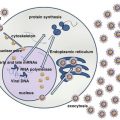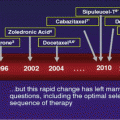Induction (two-drug), for 1 month
Vincristine 1.5 mg/m2 per dosea, days 1, 8, 15, and 22
Prednisolone 40–60 mg/m2 per day, for 28 days
l-asparaginase (if available) 6,000 U/m2 per dose, days 4, 6, 8, 11, 13, and 15
Intrathecal methotrexate, days 8, 15, and 22
Interim maintenance (part 1), for 8 weeks
6-mercaptopurine 37.5–50 mg/m2 per night (before bedtime)
Oral methotrexate 15–20 mg/m2 per dose, weeks 2, 4, 6, and 8
Intrathecal methotrexate, weeks 1, 3, 5, and 7
Delayed intensification (part 1), for 4 weeks
Vincristine 1.5 mg/m2 per dosea, days 1, 8, 15, and 22
Dexamethasone 4–6 mg/m2 per day, for 28 days
Intrathecal methotrexate, days 1 and 15
Interim maintenance (part 2), for 8 weeks
Same as interim maintenance part 1
Delayed intensification (part 2), for 4 weeks
Same as delayed intensification part 1
Maintenance, 4-week block, repeated until 2 years
6-mercaptopurine 37.5–50 mg/m2 per night (before bedtime), for 4 weeks
Oral methotrexate 15–20 mg/m2 per week, for 4 weeks
Dexamethasone 4–6 mg/m2 per day, for 5 days during week 3
Vincristine 1.5 mg/m2 per dosea, week 3
Table 2
Proposed protocol for children and adult patients with acute myeloid leukemia in countries with limited resources
AML (non-APL) | Cytarabine 20 mg/m2 twice daily, for 10–15 days, monthly courses |
APL | Induction |
ATO 0.15 mg/kg per day (2H IV), until CR (max 60 days) | |
ATRA 45 mg/m2 per day in 2 doses, until CR (max 60 days) | |
Consolidation | |
ATO 0.15 mg/kg per day (2H IV), 5 days per week, 4 weeks every 8 weeks, 4 cycles | |
ATRA 45 mg/m2 per day in 2 doses, 2 weeks every 4 weeks, 7 cycles |
2.2 Ph1-Positive ALL
The outcome of Ph1-positive ALL has been dramatically improved by the use of ABL1 tyrosine kinase inhibitors in children and in adults. Addition of a TKI such as imatinib or dasatinib to conventional chemotherapy increased remission rates to more than 90 %. In adults, minimal induction approaches combining TKI and prednisone have shown that a CR can be reached in almost all patients with limited toxicities [17]. In spite of this improvement, allogeneic stem cell transplantation remains recommended in adults patients in HIC. If TKIs are available, combining continuous TKI administration with chemotherapy is recommended.
3 Acute Myeloid Leukemia Therapy
In resource-limited settings, emphasis should be set on the treatment of APL, which is highly curable without chemotherapy, and in other favorable-risk AML, which can be cured in a significant proportion of patients with intensive chemotherapy but without stem cell transplantation, provided adequate supportive care is available to limit TRM. In other patients, best supportive care and management of hyperleukocytosis with cytoreductive therapy can only prolong survival for a few weeks or months following diagnosis.
3.1 Acute Promyelocytic Leukemia (APL)
Despite its excellent long-term outcome with modern therapy, APL is still characterized by an important rate early death (ED) related to coagulopathy contrasting with favorable outcome once differentiation therapy has been introduced. ED rates are in the 5–10 % range in HIC but rise up to 30 % in MIC, resulting in long-term overall survival (OS) below 60 % [18]. Distance to treatment center and delay in diagnosis are key determinants of ED [7]. As soon as a diagnosis of APL is suspected, coagulopathy should be managed with immediate onset of oral all-trans retinoic acid (ATRA) and aggressive transfusion support (frozen plasma and platelets). The use of chemo-free, arsenic-based regimens to cure APL was pioneered in MIC, where intravenous arsenic trioxide (ATO) as single agent provided a CR rate of 86 % with 65 % overall survival at 5 years [19]. ATO has little hematologic toxicity and thus spares supportive care resources compared to chemotherapy. The main toxicity is cardiac, with QTc prolongation exposing to the risk of ventricular arrhythmias. Patients treated with ATO should thus avoid QTc-prolonging medications and their EKG be monitored on a regular basis.
In low-/intermediate-risk APL (WBC < 10 × 109/L), combination of IV ATO and oral ATRA continued for a median of 35 days until achievement of CR and followed by consolidation therapy based on sequential ATO and ATRA courses is recommended [5]. Hyperleukocytosis can be managed with cytoreduction by hydroxyurea (HY). ATO-ATRA combination may lead to a life-threatening “differentiation syndrome” (DS) manifesting as weight gain, bilateral pulmonary infiltrates, pleural or pericardic effusions, and fever. DS requires steroids and/or transient tapering or discontinuation of ATO. It is likely that IV ATO can be safely substituted by oral ATO or oral tetra-arsenic tetra-sulfide (AS4S4), thus limiting patient’s visits. Oral ATO may also have a better safety profile than IV ATO, with less frequent QTc prolongation. In high-risk APL (WBC >10 × 109/L), accumulated data suggest that some form of chemotherapy, e.g., an anthracycline, has to be added to an ATO-ATRA regimen to minimize the risk of relapse. Because APL is highly curable, limited blood derivative resources should prioritize APL. The experience from an international consortium has demonstrated that it is possible to improve the outcome of APL in MIC when drugs and blood derivatives are available, provided a prompt diagnosis of APL can be performed by a hematology laboratory with access to basic microscopy [7, 18].
3.2 Non-acute Promyelocytic AML
In children and young adults, other forms of AML are currently treated with several intensive chemotherapy courses as induction and consolidation therapy, followed by allogeneic stem cell transplantation in intermediate- or high-risk AML [3]. Best CR and survival rates are obtained by myelosuppressive regimen based on cytarabine and anthracycline (7 + 3). These regimens typically result in prolonged neutropenia, requiring hospitalization, broad-spectrum antibiotics, and regular transfusion support. If limited transfusion and antibiotic resources are available, younger patients with favorable-risk CBF-AML should be prioritized. These patients can be cured in up to 60 % of cases with a “7 + 3” induction course, resulting in very high CR rates, followed by at least two high-dose cytarabine (HDAC) courses, each including 6 boluses of 1–3 g/m2 cytarabine.
When transfusion support is not easily available, non-intensive options can be envisaged. Low-dose subcutaneous cytarabine can achieve CR in 30–40 % patients with CN-AML, but not in patients with abnormal cytogenetics. These CR are reached after a median of 3 months of therapy and thus LDAC should not be withheld after a single course, except in case of overt AML progression. Median disease-free duration after reaching CR is around 8 months with LDAC. Because LDAC does not increase resource consumption compared to oral HY, it should be favored in patients with CN-AML [20]. In other instances, patients should receive only available supportive care, with oral HY introduced in case of hyperleukocytosis. The median survival of such patients is around 3 months, even in developed countries with broad access to supportive care [20].
4 Supportive Care
4.1 Hyperleukocytosis and Tumor Lysis Syndrome
Hyperleukocytosis in AML should be managed with HY until WBCs are <10–20 × 109/L, with limited red blood cell (RBC) transfusions to avoid hyperviscosity. It has been proposed that leukostasis manifesting as bilateral pulmonary infiltrates, especially in AML with monocytic differentiation, could be managed with steroids until the WBC is controlled [21]. Tumor lysis syndrome (TLS) should be prevented with abundant saline hydration and allopurinol [22]. Rasburicase is highly effective in preventing TLS in high-risk patients but is expensive and risky in male of Mediterranean or African origin, who are more frequently glucose-6 phosphate dehydrogenase deficient.
Stay updated, free articles. Join our Telegram channel

Full access? Get Clinical Tree





